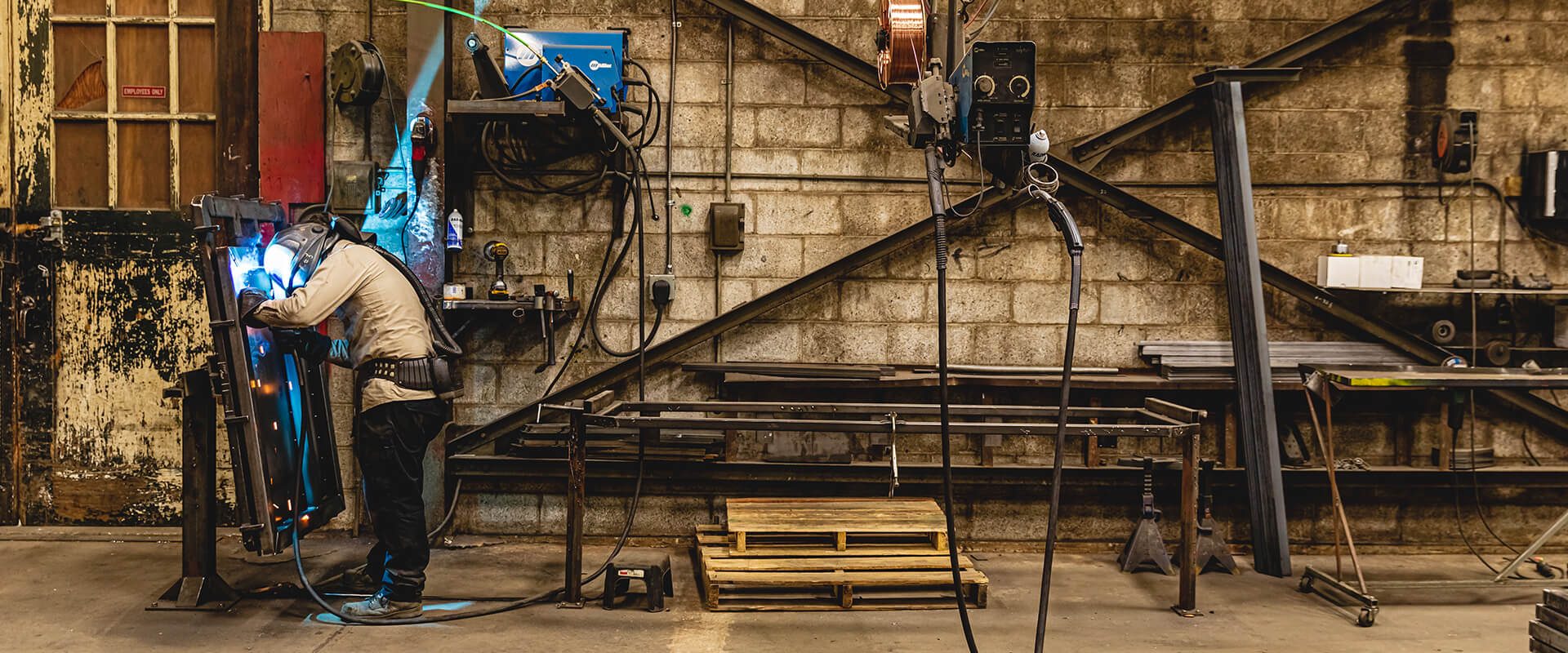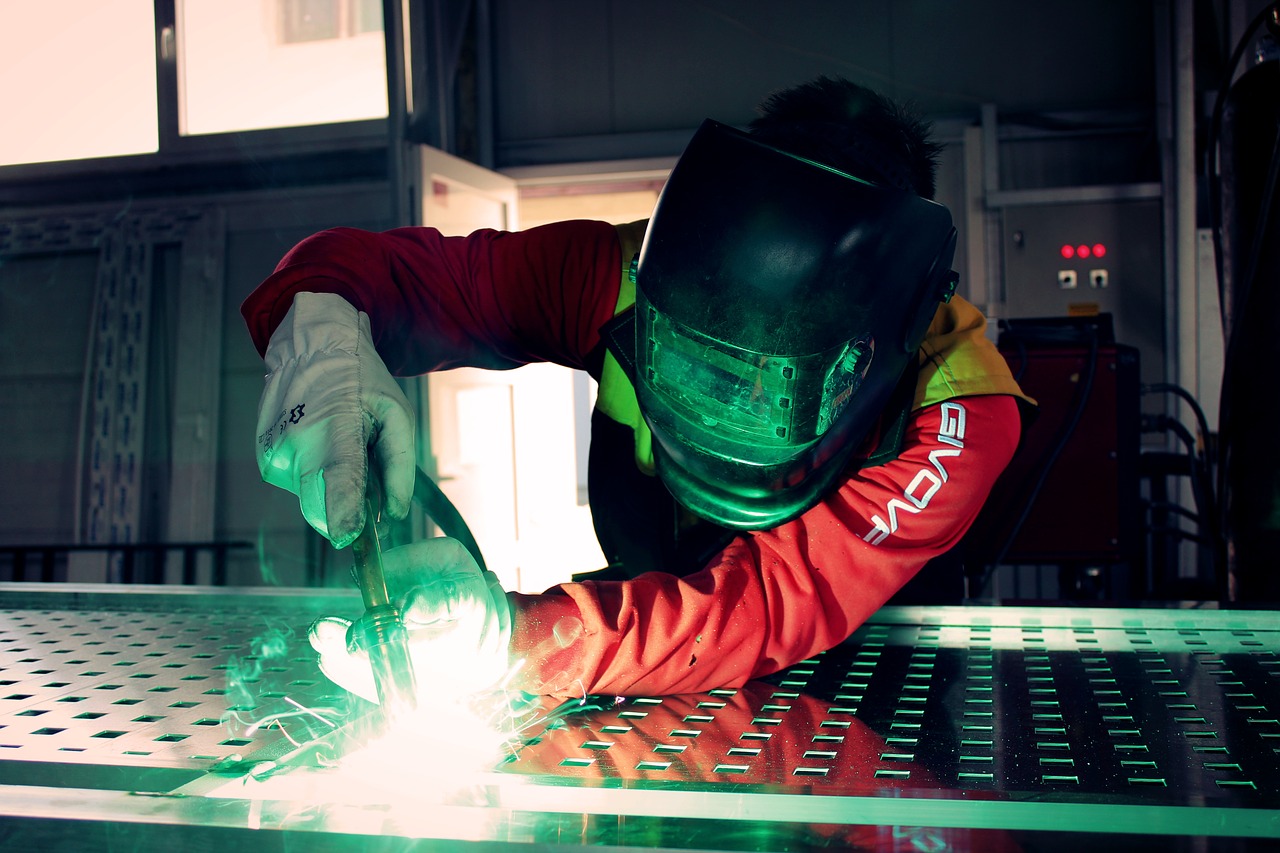Common Welding Repair Work Issues and Just How to Address Them Efficiently
Welding fixings often experience a variety of concerns that can endanger the stability of the final product. Usual issues include poor infiltration, porosity, and imbalance, amongst others. Each problem presents one-of-a-kind challenges that need specific methods for resolution. Understanding these problems is crucial for welders aiming to improve their skills and end results. This conversation will discover these common welding fixing concerns and efficient techniques to resolve them.
Insufficient Penetration
Insufficient penetration takes place when the weld metal stops working to totally fuse with the base product, resulting in weak joints and possible architectural failures. This concern frequently stems from insufficient heat input, wrong electrode angle, or improper welding rate. Welders may experience inadequate infiltration as a result of a mistake of the essential criteria for a certain product density or type. Additionally, contamination on the base material's surface can impede reliable bonding, worsening the issue. To deal with inadequate penetration, welders must guarantee appropriate setups on their tools and keep a tidy job surface. Routine inspection of welds is suggested to identify any kind of deficiencies early, enabling prompt modifications and the prevention of endangered structural integrity in bonded assemblies.
Porosity
Porosity is a typical issue in welded joints that shows up as small gas bubbles trapped within the weld steel. This defect can jeopardize the honesty of the weld, causing lowered stamina and potential failure under tension. Montana Mobile Welding and Repair Belgrade. Porosity commonly occurs from contamination, dampness, or incorrect welding methods, which allow gases to escape right into the liquified weld swimming pool. To attend to porosity, welders need to ensure correct surface area preparation, keep a tidy functioning environment, and make use of appropriate welding specifications. Furthermore, choosing the best filler product and shielding gas can alleviate gas entrapment. Normal assessment and testing of welds can help recognize porosity early, ensuring timely rehabilitative activities are taken, consequently maintaining the quality and reliability of the bonded framework
Misalignment
Misalignment in welding can emerge from numerous factors, consisting of improper setup and thermal expansion. Understanding the origin causes is important for effective resolution. Numerous improvement strategies are offered to straighten elements and assure architectural integrity.
Causes of Misalignment
Welding imbalance typically originates from a selection of underlying problems that can endanger architectural honesty. One main reason is inappropriate fit-up of parts prior to welding, which can lead to gaps and irregular surfaces. Variants in thermal development during the welding procedure can additionally lead to distortion, especially if the products being joined have different coefficients of growth. Furthermore, insufficient fixturing and securing may fall short to hold components firmly in position, resulting in motion during welding. Poorly kept equipment, consisting of welding equipments and tools, may present disparities in the weld bead, additional adding to imbalance. Lastly, operator mistake, stemming from insufficient training or experience, can additionally play a considerable role in creating misaligned welds.
Correction Techniques Available
Resolving imbalance successfully calls for a combination of restorative methods customized to the details problems available. One typical approach is using fixtures or jigs to hold components in the proper position throughout welding, making certain constant alignment. In addition, preheating the materials can help in reducing distortion and boost fit-up. For considerable misalignment, mechanical realignment methods, such as using hydraulic jacks or clamps, can be utilized to correct the placement before welding. Post-weld warm treatment may also be needed to alleviate stresses triggered by imbalance. Cautious assessment and adjustment during the arrangement stage can stop misalignment issues from ending up being substantial problems, advertising a smoother welding procedure and enhancing overall architectural integrity.
Distortion
Distortion is a common difficulty in welding that can arise from various variables, consisting of uneven heating and air conditioning. Understanding the sources of distortion is essential for implementing efficient prevention techniques. Resolving this problem not just boosts structural honesty but likewise enhances the overall top quality of the weld.
Causes of Distortion
When based on the intense heat of welding, materials typically undertake changes that can bring about distortion. This sensation largely develops from thermal expansion and contraction throughout the welding process. As the weld area warms up, the product expands; upon air conditioning, it contracts, which can create inner stress and anxieties. Furthermore, uneven heating across a work surface can exacerbate these stress and anxieties, resulting in warping or bending. The kind of product also plays a significant role; metals with differing thermal conductivity and coefficients of growth may react differently, resulting in uncertain distortions. Moreover, inadequate joint layout and poor fixturing can add to imbalance throughout welding, raising the possibility of distortion. Recognizing these causes is vital for reliable welding repair work and avoidance strategies.
Avoidance Techniques
Effective prevention strategies for distortion throughout welding emphasis on managing warm input and making sure proper joint layout. Maintaining a regular heat input helps to decrease thermal development and contraction, which can result in distortion. Making use of methods such as pre-heating the workpiece can also lower the temperature slope, promoting uniform heating. Additionally, choosing appropriate joint layouts, such as T-joints or lap joints, can enhance security and decrease anxiety focus. Applying proper fixturing to protect the workpieces in place further aids in keeping placement during the welding procedure. Ultimately, staggered welding series can distribute heat a lot more equally, avoiding localized distortion. By applying these techniques, welders can significantly lower the possibility of distortion and boost the total quality of their welds.
Cracking
Breaking is a common issue experienced in welding repair work, commonly resulting from different aspects such as inappropriate air conditioning prices, material option, or insufficient joint prep work. The occurrence of cracks can substantially endanger the stability of the weld, bring about possible failures throughout procedure. To resolve this concern, welders have to first assess the origin, making certain that materials are compatible and properly selected for the certain application. Additionally, managing the air conditioning rate throughout the welding procedure is important; quick cooling can induce anxiety and bring about cracking. Appropriate joint style and preparation additionally add to reducing the threat. Executing these methods can enhance weld high quality and durability, inevitably minimizing the possibility of fracturing in completed weldments.

Incomplete Combination
A significant Go Here problem in welding repair work is insufficient blend, which happens when the weld steel does not sufficiently bond with the base material or previous weld passes - Montana Mobile Welding and Repair Welding. This issue can lead to weaknesses in the joint, potentially jeopardizing the integrity of mig welding set the welded framework. Factors contributing to insufficient combination consist of not enough warmth input, improper welding method, and contamination of the surface areas being joined. To address this concern properly, welders need to ensure correct pre-weld cleansing and surface prep work, in addition to adjust their welding criteria to accomplish adequate infiltration and combination. Routine examination during the welding procedure can also assist determine incomplete combination early, permitting timely corrective measures to boost the general quality of the weld
Overheating
While welding repair services can boost architectural integrity, overheating provides a considerable difficulty that can lead to material deterioration. Too much heat during welding can alter the mechanical buildings of metals, causing decreased toughness, boosted brittleness, and warping. This sensation is particularly crucial in high-stress applications where structural dependability is paramount. Recognizing getting too hot can include aesthetic assessments for staining or distortion, as well as monitoring temperature level during the welding procedure. To reduce the dangers connected with overheating, welders must utilize appropriate strategies, such as managing heat input, readjusting travel rate, and making use of suitable filler products. Furthermore, executing pre- and post-weld warm treatments can assist bring back product buildings and enhance the general top quality of the fixing, making certain long-lasting efficiency and safety and security.
Frequently Asked Concerns
What Are the Common Indicators of a Welding Issue?

How Can I Test My Welds for Top quality?
To check welds for top quality, one can make use of visual evaluations, ultrasonic testing, and radiographic techniques. Each strategy assures structural integrity, identifies defects, and verifies adherence to defined requirements, eventually boosting the reliability of the welded joints.
What Safety and security Precautions Should I Take While Welding?
When welding, one ought to focus on safety and security by wearing appropriate personal protective equipment, making sure appropriate ventilation, safeguarding flammable materials away, preserving a clean work area, and recognizing environments to avoid injuries and mishaps.
Can I Repair a Weld Without Renovating the Entire Joint?
Fixing a weld without redoing the whole joint is feasible, relying on the damage (Fabrication). Strategies such as grinding, including filler product, or making use of a welding process can effectively deal with certain problems while preserving the bordering framework
What Tools Are Essential for Efficient Welding Repair Works?
Crucial tools for effective welding repair services consist of a welding equipment, cable brush, mill, protective equipment, clamps, and filler products. Each device plays a vital role auto welding near me in making sure high quality and safety and security during the repair service process. Porosity typically develops from contamination, wetness, or incorrect welding methods, which enable gases to leave right into the liquified weld pool. Badly conserved equipment, including welding devices and devices, may introduce inconsistencies in the weld bead, more contributing to misalignment. When subjected to the extreme warmth of welding, products typically undergo changes that can lead to distortion. Fracturing is a common concern come across in welding fixings, often resulting from different aspects such as improper air conditioning rates, product choice, or insufficient joint preparation. A substantial problem in welding repair work is insufficient combination, which occurs when the weld steel does not sufficiently bond with the base material or previous weld passes.